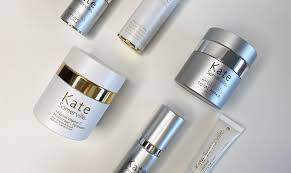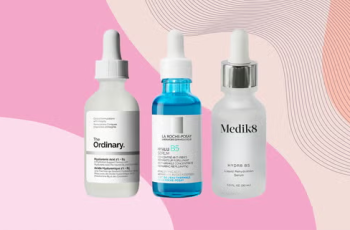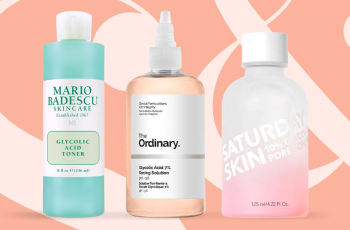
Can You Layer Peptides and Retinol? A Complete Guide for Your Skincare Routine
Skincare layering might sound easy—until you come across powerhouse ingredients like peptides and retinol. If you’re new to skincare, using these two together can feel confusing.
But don’t worry—we’re breaking it down simply.
In today’s post, we’ll explore whether peptides and retinol can be layered, how to use them safely, and what kind of results you can expect when used correctly.
First, Let’s Understand the Benefits of Peptides and Retinol
Before deciding how to layer these ingredients, it’s important to know what each one does for your skin.
✨ What Do Peptides Do for the Skin?
Peptides are short chains of amino acids, which are the building blocks of proteins like collagen and elastin. Here are their main benefits:
Help reduce the appearance of fine lines and wrinkles
Support a stronger and more resilient skin barrier
Offer anti-inflammatory benefits for calmer skin
Promote firmer, plumper skin over time
Encourage collagen production for youthful elasticity
Assist in repairing damage to the skin barrier
? What Does Retinol Do for the Skin?
Retinol, a vitamin A derivative, is known for its transformative effects on skin. It’s widely used in anti-aging and acne treatments. Benefits include:
Smooths out fine lines and softens wrinkles
Evens out skin tone and brightens dullness
Controls oil production for acne-prone skin
Reduces the frequency and severity of breakouts
Fades hyperpigmentation and dark spots over time
Can You Use Peptides and Retinol Together?
Yes, you can—but with care. These two ingredients complement each other when used correctly, but there’s potential for irritation if overused or layered improperly.
Peptides are typically well tolerated, but some forms may penetrate deeply and increase the activity of retinol—leading to dryness in sensitive or dry skin types.
To minimize this, start slow. Monitor how your skin reacts and adjust your usage as needed.
Should You Layer Peptides or Alternate Them With Retinol?
You have two main options for using peptides and retinol:
Option 1: Layering Peptides and Retinol in One Routine
This is possible, especially for those with normal, oily, or combination skin.
Apply retinol first, as it should sit directly on clean skin to be effective
Follow with a peptide serum or cream to help nourish and restore your skin
Finish with a moisturizer and SPF (in the morning) or just moisturizer (at night)
? Option 2: Alternate Use (Recommended for Sensitive Skin)
If you have sensitive or reactive skin, this approach might work better.
Use peptides in the morning to hydrate and protect
Use retinol in the evening to repair and renew
This approach supports your skin’s natural circadian rhythm
When Should You Apply Peptides vs Retinol?
Morning = Peptides: They strengthen your barrier and help your skin defend against environmental stress
Evening = Retinol: It works best at night, away from UV exposure, and supports overnight repair
By using peptides in the morning and retinol at night, you maximize the benefits without overwhelming your skin.
What Goes First: Peptides or Retinol?
If you’re using both in the same routine, the correct order is:
Retinol serum, Peptide serum or cream, Moisturizer
This layering ensures that retinol penetrates first, while peptides come in to hydrate, nourish, and calm the skin afterward.
Can Peptides Help With Wrinkles?
Absolutely. Peptides are one of the best ingredients for treating fine lines and loss of firmness.
When applied topically, peptides:
Act as messengers to trigger collagen production
Encourage skin to appear firmer, smoother, and tighter
Improve skin texture and support long-term elasticity
Over time, they help restore your skin’s bounce and resilience, especially when combined with retinol.
What Should You NOT Combine With Peptides?
Peptides play nicely with most skincare ingredients. However, some experts suggest avoiding mixing peptides with vitamin C.
That’s because:
Vitamin C may alter the pH needed for peptides to work
In some cases, they may neutralize each other, making both less effective
The combination might increase the risk of irritation, especially in sensitive skin
To be safe, use vitamin C in the morning and peptides in the evening, or alternate days if you’re using both.
Can You Layer Serums Over Retinol?
Yes—but only if the texture and formulation allows for it.
Here’s the general rule of thumb:
Apply products from thinnest to thickest consistency.
For example:
Start with a retinol serum (lightweight and active)
Follow with a hydrating serum, like one containing hyaluronic acid
Finish with a peptide moisturizer or a barrier-repair cream
Avoid applying another strong active (like vitamin C or exfoliating acids) right after retinol.
If you’re unsure, keep it simple:
Retinol + Hyaluronic Acid + Moisturizer is a safe trio.
Can I Use Peptides in the Morning and Retinol at Night?
Definitely. In fact, this is the preferred method for most skin types.
Using peptides in the morning:
Helps boost collagen production early in the day
Supports the skin barrier under makeup or SPF
Soothes skin and reduces inflammation from external stress
Using retinol at night:
Repairs UV and environmental damage
Stimulates cell turnover while you sleep
Helps reduce pigmentation, lines, and texture
Together, this day-night combo delivers visible, long-term skin improvements.
Bonus Tip: Always Use SPF With Retinol
Retinol makes your skin more sensitive to sunlight. Even if you’re indoors, UV exposure through windows can still damage retinol-treated skin.
Always apply a broad-spectrum SPF 30 or higher the next morning.
This helps:
Prevent sunburn and irritation
Protect skin from UV-related pigmentation
Maximize the results of your nighttime skincare
Summary: Can You Layer Peptides and Retinol?
Yes, but it depends on how your skin reacts.
Here’s a quick breakdown:
Routine Best For What to Do
Layer Together Normal to Oily Skin Apply retinol first, then peptides
Alternate Use Sensitive or Dry Skin Peptides in AM, retinol in PM
Peptides + SPF All Skin Types Protects skin from sun and strengthens the barrier
Avoid Peptides + Vit C Reactive Skin Use on different days or times to avoid conflict
Final Thoughts
Peptides and retinol are two of the most effective skincare ingredients you can use. They deliver real results, from anti-aging to hydration and barrier repair.
By learning how to layer or alternate them correctly, you give your skin exactly what it needs—without the risk of overdoing it.
As always, listen to your skin and start slowly. If you’re unsure, a quick chat with a dermatologist or skincare professional can go a long way.
And if skincare is your thing, don’t forget to follow Procoal on Instagram for more expert tips, tutorials, and real skin results!



